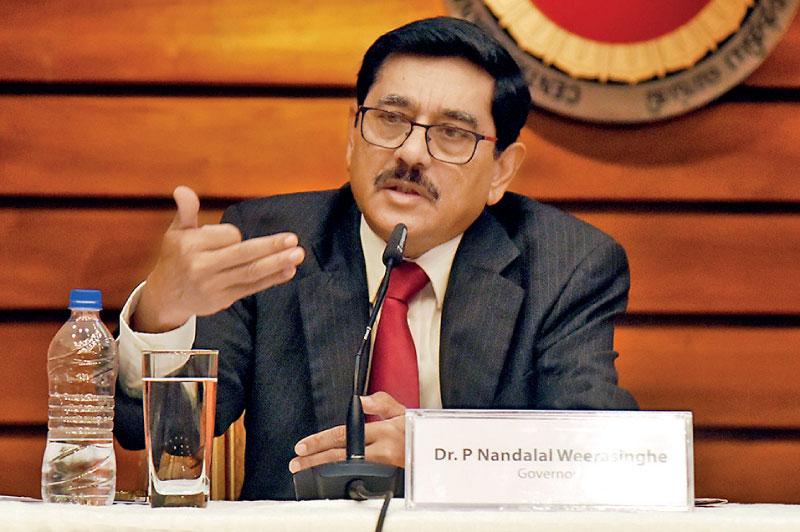25 Nov 2023 - {{hitsCtrl.values.hits}}

Central Bank Governor Dr. Nandalal Weerasinghe - PIC BY NISAL BADUGE
Defying the expectations of market participants for a pause in the rate cuts at this week’s monetary policy meeting, the Monetary Policy Board delivered another 100-basis-point rate cut yesterday, bringing the total reduction in policy rates to 650 basis points since they initiated the rate-cutting campaign in June this year.
With yesterday’s cut in key rates, both the standing deposit and lending facility rates now stand at 9.0 percent and 10.0 percent, respectively, which the Central Bank believes is sufficient to both maintain price stability—its prime objective and the bedrock of the economy—while helping the economy reach its potential.
The central bankers are tasked with a tricky balancing act with interest rates—the only tool they have got—where they cannot afford to cut rates too low, stoking price pressures nor can they raise rates too high, choking economic growth and
causing unemployment.
Leading up to yesterday’s Monetary Policy decision, the eighth and final one for the year, a section of the market expected the rate-setting committee to stand pat after cutting the rates thrice through October, due to the upside risks to near-term inflation coming from the energy and other utilities prices and impending hike of the Value-Added Tax from next year, among other things.
However, the Central Bank said that these near-term price pressures are supply-driven and largely transitory, as the demand-side pressures remain muted, enabling the prices to converge to their 5 percent medium-term target.
Consumer prices showed a slight uptick in October to 1.5 percent, according to the Colombo Consumer Price Index, the officials’ most-watched price gauge, after bottoming in September, due to the expiry of the high base effects when the prices peaked at near 70 percent last year.
“The board took note of possible upside risks to inflation projections in the near term, due to supply-side factors stemming from the expected developments domestically and globally,” a statement issued by the Monetary Policy Board said.
“However, the board viewed that such near-term risks would not materially change the medium-term inflation outlook, as inflation expectations of the public remain anchored and economic activity is projected to remain below par in the near to medium term,” it added.
The Central Bank also assuaged concerns of potentially stoking price pressures again from the lower rates and assured that the rate cuts delivered thus far, coupled with other monetary easing measures, are sufficient to stabilise inflation at its desired level over the medium term.
However, it continued to stress the need for a swift, sizable and broad-based pass-through of these rate cuts to the market lending rates by financial institutions and thereby accelerate the normalisation of market interest rates in the period ahead.
In fact, this week’s decision by the Monetary Policy Board appears to be driven more by the need to support the economy and less by other factors, including inflation, which has been largely brought under control.
While the rates have broadly come down from their recent peaks towards the levels anticipated and directed by the Central Bank a couple of months ago, the board is of the view that their actions, including the most recent one, provide the rates with more space to come down and thereby channel more credit to the real economy, helping to accelerate the currently weak recovery momentum.
22 Nov 2024 22 Nov 2024
22 Nov 2024 22 Nov 2024
22 Nov 2024 22 Nov 2024
22 Nov 2024 22 Nov 2024
22 Nov 2024 22 Nov 2024